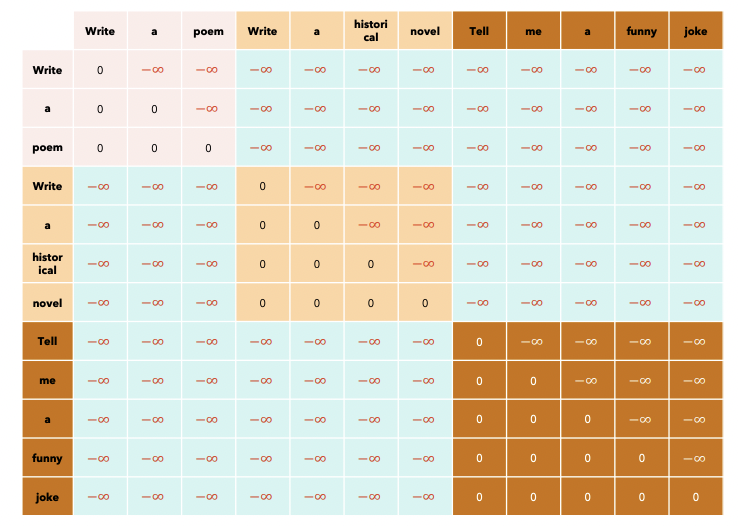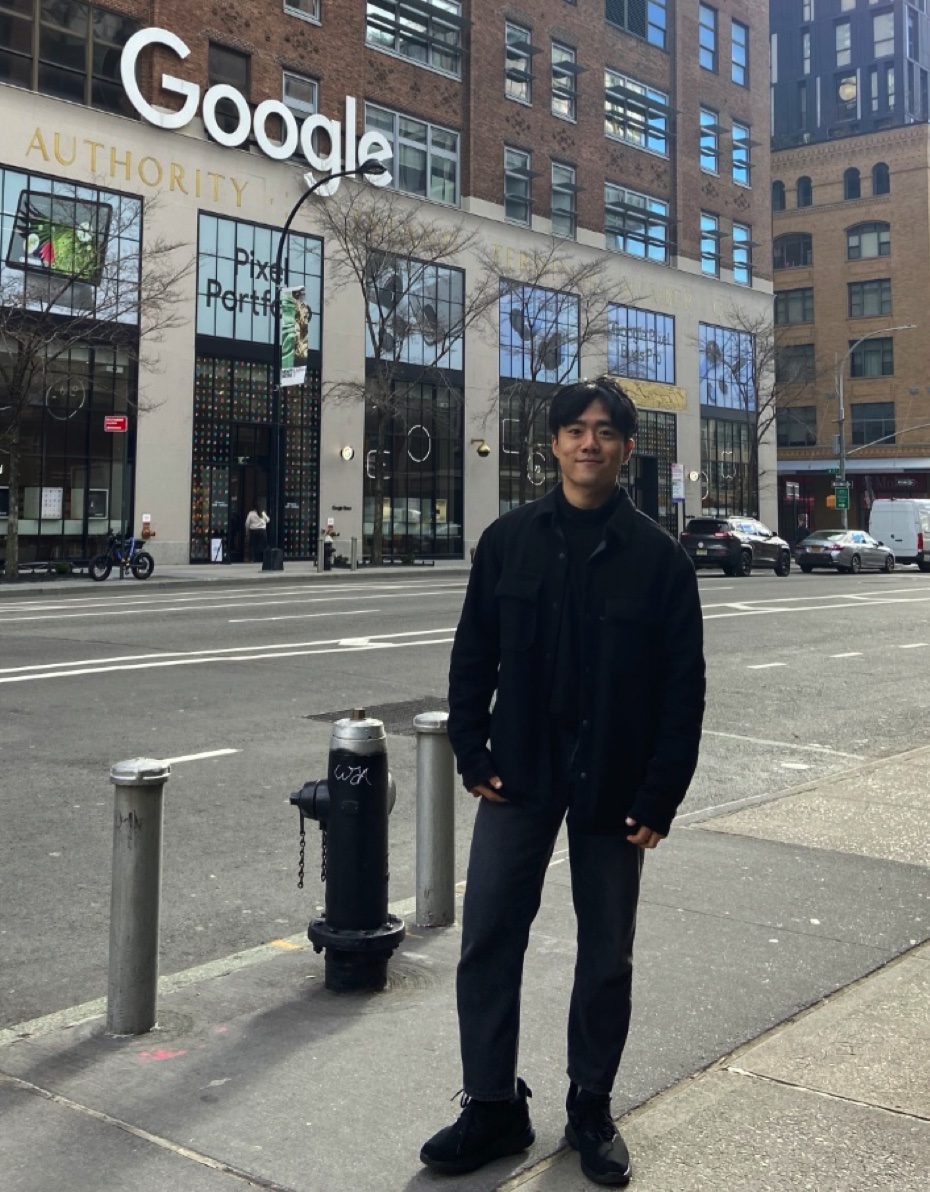All about “Mistral”
(Reference: https://www.youtube.com/watch?v=UiX8K-xBUpE)
Contents
- Introduction to Mistral
- Transformer vs. Mistral
- Mistral vs. LLaMA
- Mistral vs. Mixtral
- Sliding Window Attention (SWA)
- w/o SWA vs. w/SWA
- Details
- KV-Cache
- KV-Cache
- Rolling Buffer Cache
- Pre-fill & Chunking
- Sparse MoE
- Model Sharding
- Optimizing inference with multiple prompts
1. Introduction to Mistral
(1) Transformer vs. Mistral
- (naive) Transformer = Encoder + Decoder
- Mistral = Decoder-only model (like LLaMA)
(2) Mistral vs. LLaMA
- (1) Attention \(\rightarrow\) Sliding window attention
- (2) Rolling Buffer
- (3) FFN \(\rightarrow\) MoE (for Mixtral)
- Both methods uses
- (1) GQA (Grouped query attention)
- (2) RoPE (Rotary Positional Embedding)
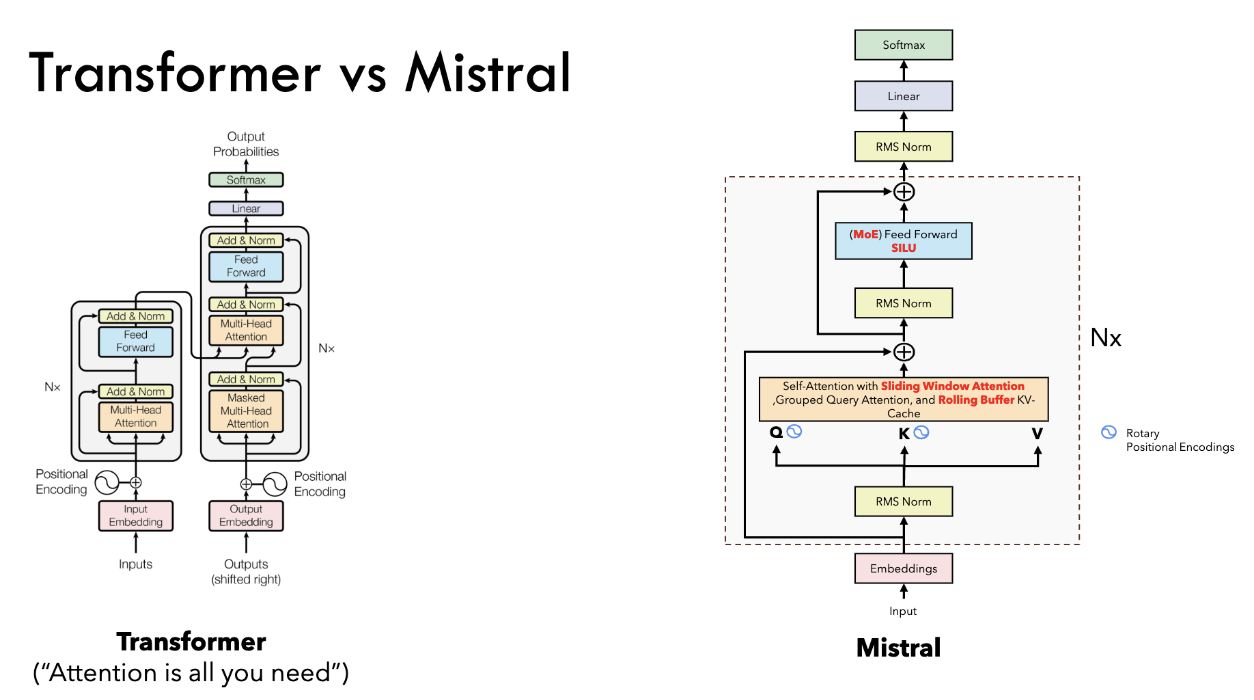
2. Mistral vs. Mixtral
Depends on the usage of MoE!
- Mistral: MoE (X) … 7B
- Mixtral: MoE (O) … 8 experts of 7B
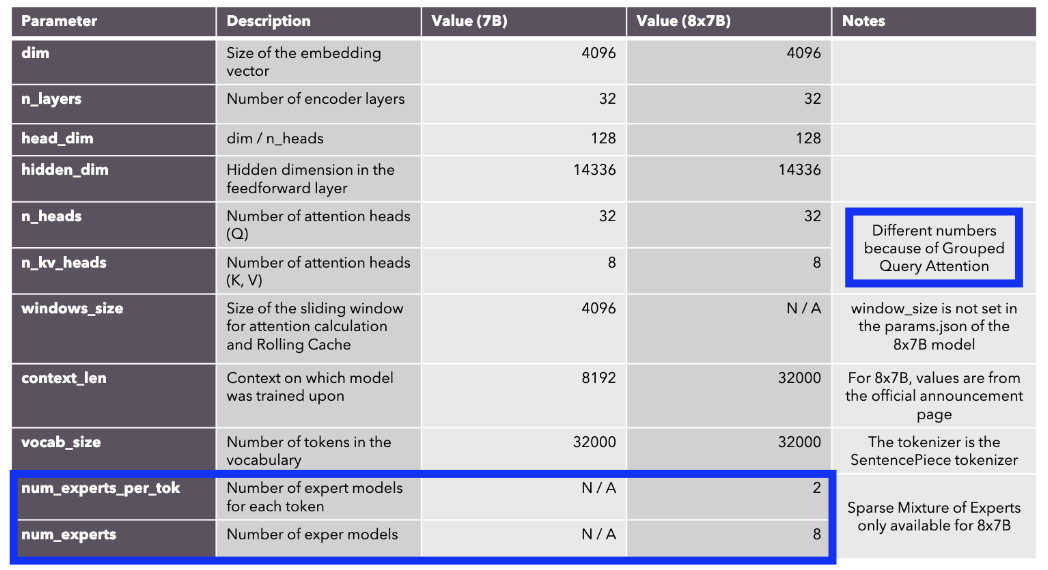
3. Sliding Window Attention (SWA)
(1) w/o SWA vs. w/ SWA
( sliding window size = 3 )
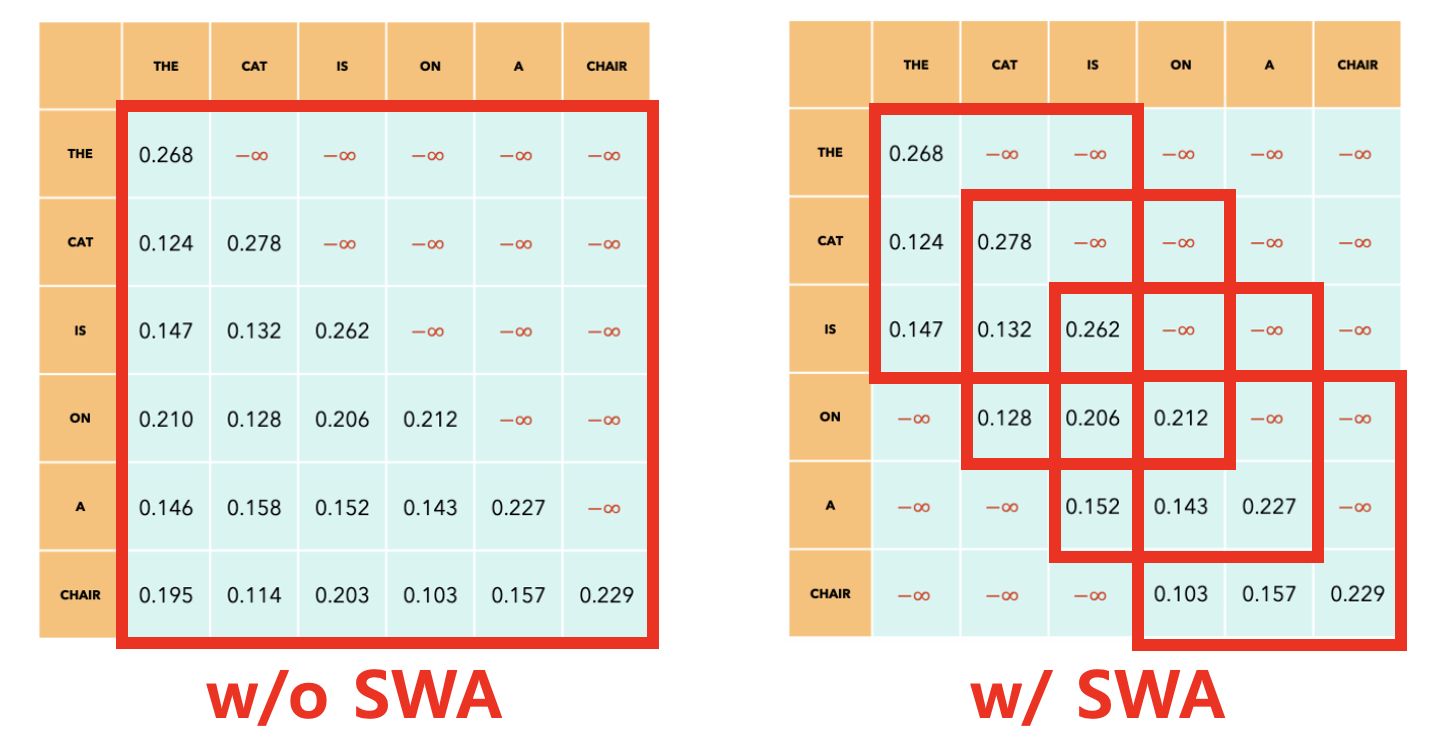
(2) Details
-
[Efficiency] Reduce the # of dot products
-
[Trade-off] May lead to degradation, as less interaction btw tokens
\(\rightarrow\) But still, much more efficient!
-
[Receptive field] Can still allow one token to watch outside the window (due to multiple layers)

4. KV-Cache
(1) KV-Cache
Goal: Faster inference!
At each step of the inference, only interested in the last token!
- As ONLY the last token is projected to linear layer (to predict the next token)
Nonetheless, model needs all the previous tokens to constitute its context
\(\rightarrow\) Solution: KV Cache
a) Inference w/o KV Cache
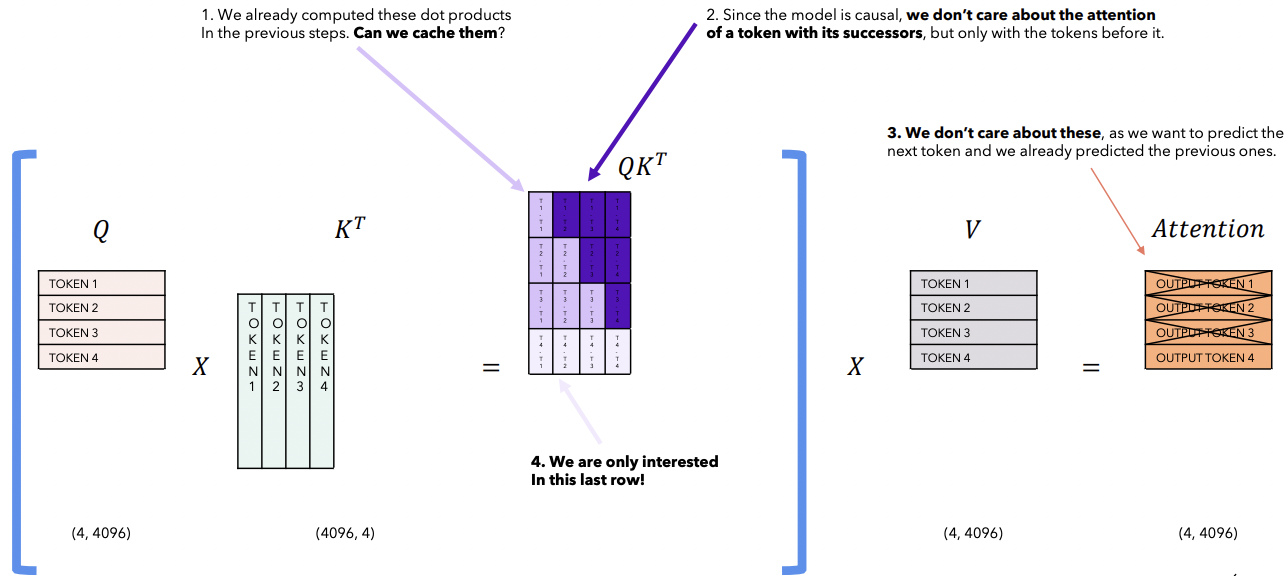
b) Inference w/ KV Cache
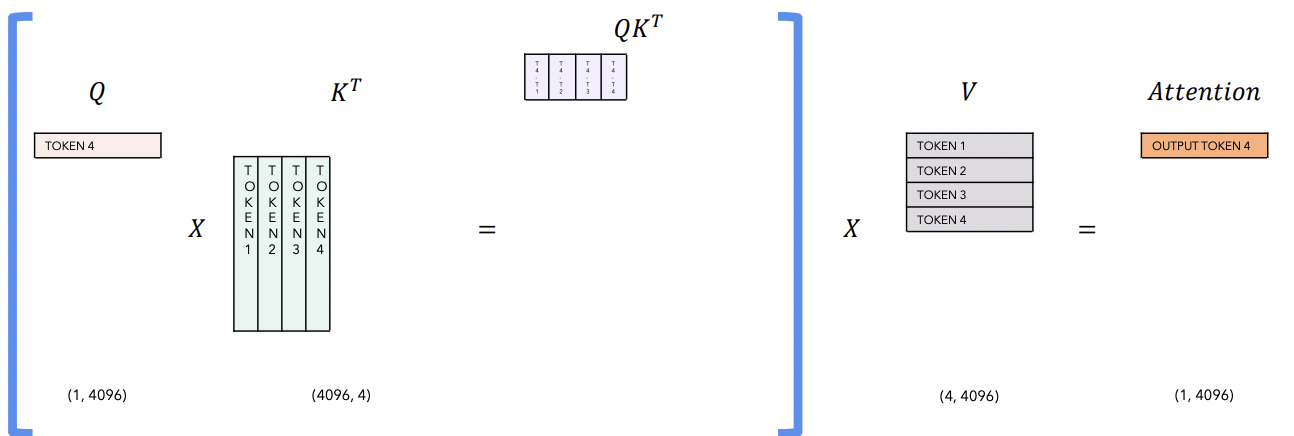
(2) Rolling Buffer Cache
“KV-Cache” + “Sliding window attention”
\(\rightarrow\) No need to keep ALL the previous tokens in the cache!
( only limit to the “latest \(W\) tokens”)
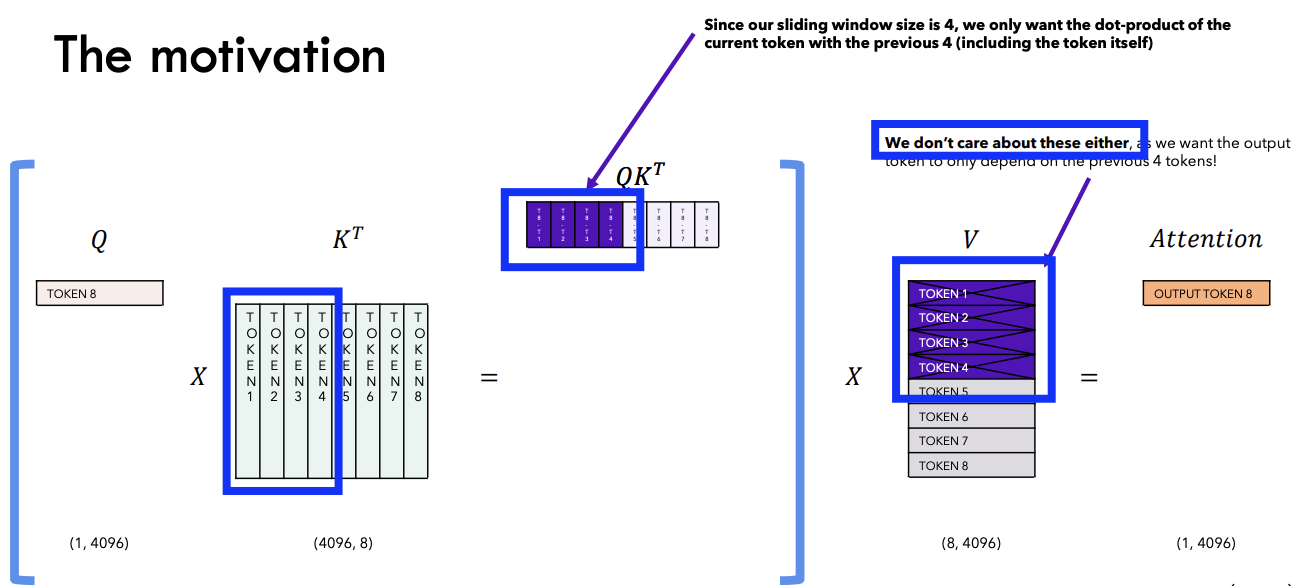
Example:
- Sentence: “The cat is on a chair”
- Window size (\(W\)) = 4
- Current token: \(t=4\) (chair)
\(t=3\) : [The, cat, is, on]
should become
\(t=4\) : [cat, is, on, a]
\(\rightarrow\) By “unrolling” ( or unrotating )
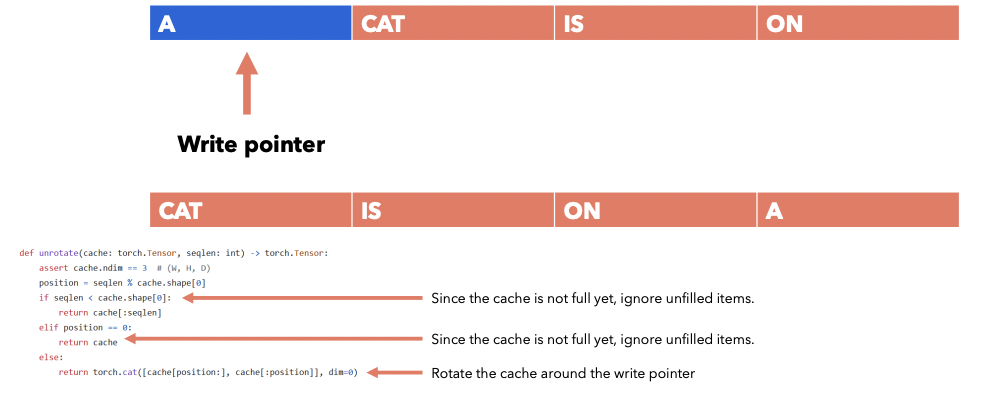
(3) Pre-fill & Chunking
a) Inference with LLM
Infernce with LLM
- Use a prompt & Generate tokens “ONE BY ONE” (using the previous tokens)
Inference with LLM + “KV-Cache”
- Add all the prompt tokens to the KV-Cache
b) Motivation
[Motivation] We know all the prompts in advance! ( = no need to generate )
\(\rightarrow\) Why not “PREFILL” the KV-Cache using the “tokens of the PROMPT”?
( + What if the prompt is toooo long? )
Solution:
- (1) Prefilling: prefill the kv-cache using the tokens of the prompt
- (2) Chunking: divide the prompt into chunkks (of size \(W\) = window size)
c) Example
Setting:
-
Large (Long) prompt + \(W=4\)
-
Sentence = “Can you tell me who is the richest man in history?”
Step 1) First prefill
- Fill the first \(W\) tokens in the KV-Cache
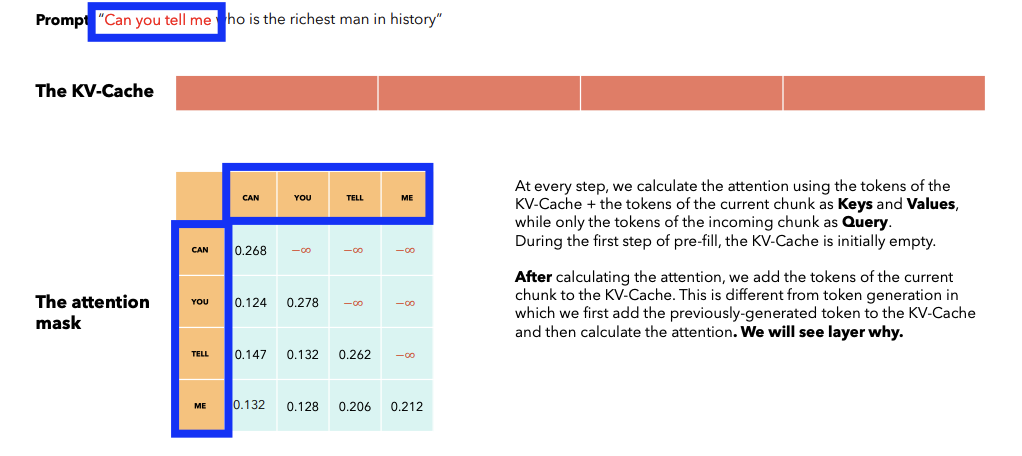
Step 2) Subsequent prefill
-
Fill the next \(W\) tokens in the KV-Cache
-
Attention masked is calculated using ….
- (1) KV-Cache (Can, you, tell, me)
- (2) Current chunk (who is the richest)
\(\rightarrow\) \(\therefore\) Size of attention mask can be bigger than \(W\)
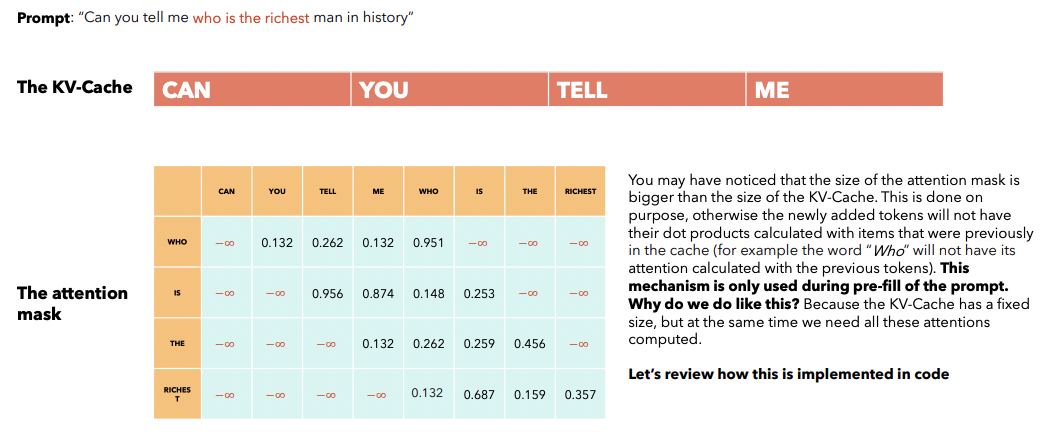
Step 3) Generation
- Size of attention mask = \(W\)

5. Sparse MoE
Mixture of Experts: Ensemble technique
- Multiple “expert” models
- Each trained on a subset of the data
- Each model specializes on it
- Output of the experts are combined
Mistral 8x7B: Sparse Mixture of Experts (SMoE)
- Only 2 out of 8 experts are used for every token
- Gate: Produces logits \(\rightarrow\) Used to select the top-k experts

Details
- Experts = FFN layers
- Architectures: Each Encoder layer is comprised of …
- (1) Single Self-Attention mechanism
- (2) Mixture of experts of 8 FFN
- Gate function selects the top 2 experts
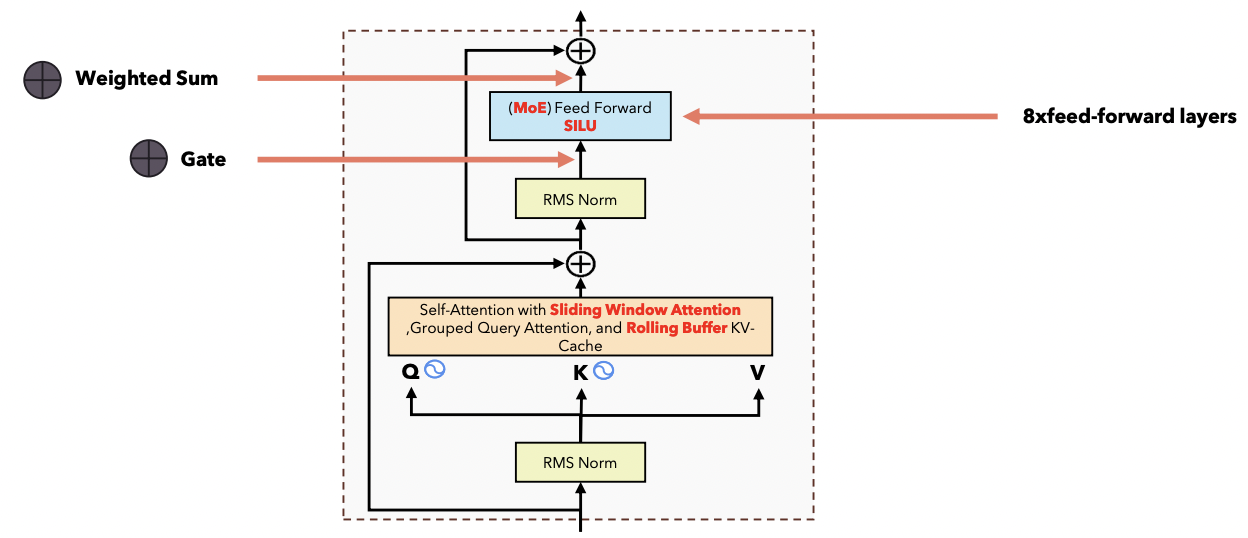

6. Model Sharding
Example) Pipeline parallelism (PP)
- Mistral = 32 Encoder layers
- 4 GPUs x 8 layers

\(\rightarrow\) Not very efficient! Only one GPU is working at a time! How to solve?
Before

After

- Divide batch into smaller microbatches!
- Gradient accumulation: Gradients for each microbatch is accumulated!
7.Optimizing inference with multiple prompts
(1) Problem
Example) Prompt of 3 different users
- Prompt 1: “Write a poem” (3 tokens)
- Prompt 2: “Write a historical novel” (4 tokens)
- Prompt 3: “Tell me a funny joke” (5 tokens)
( Note that we cannot use )

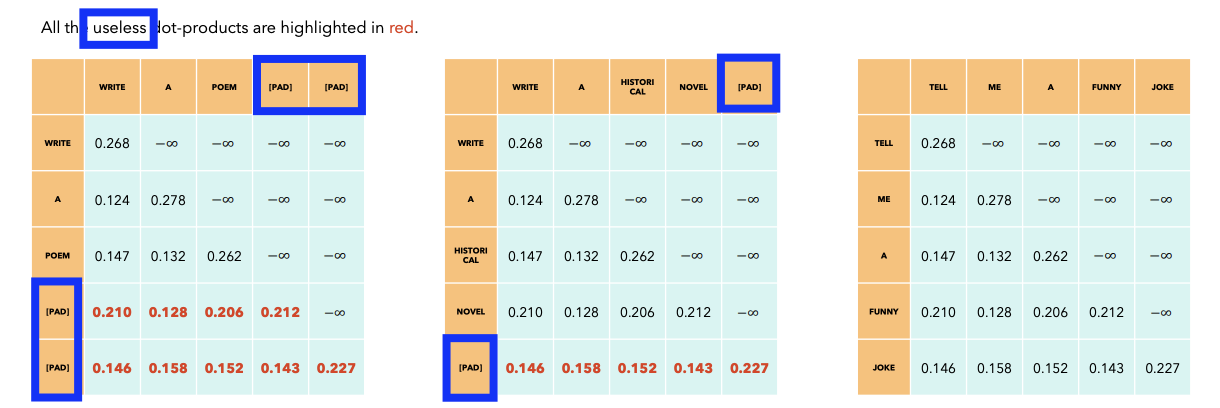
(2) Solution
Into a SINGLE sequence!
( + Keep track of the “length of each prompt” when we calculate the output )
\(\rightarrow\) by using xformers BlockDiagonalCausalMask
